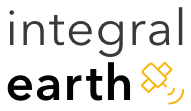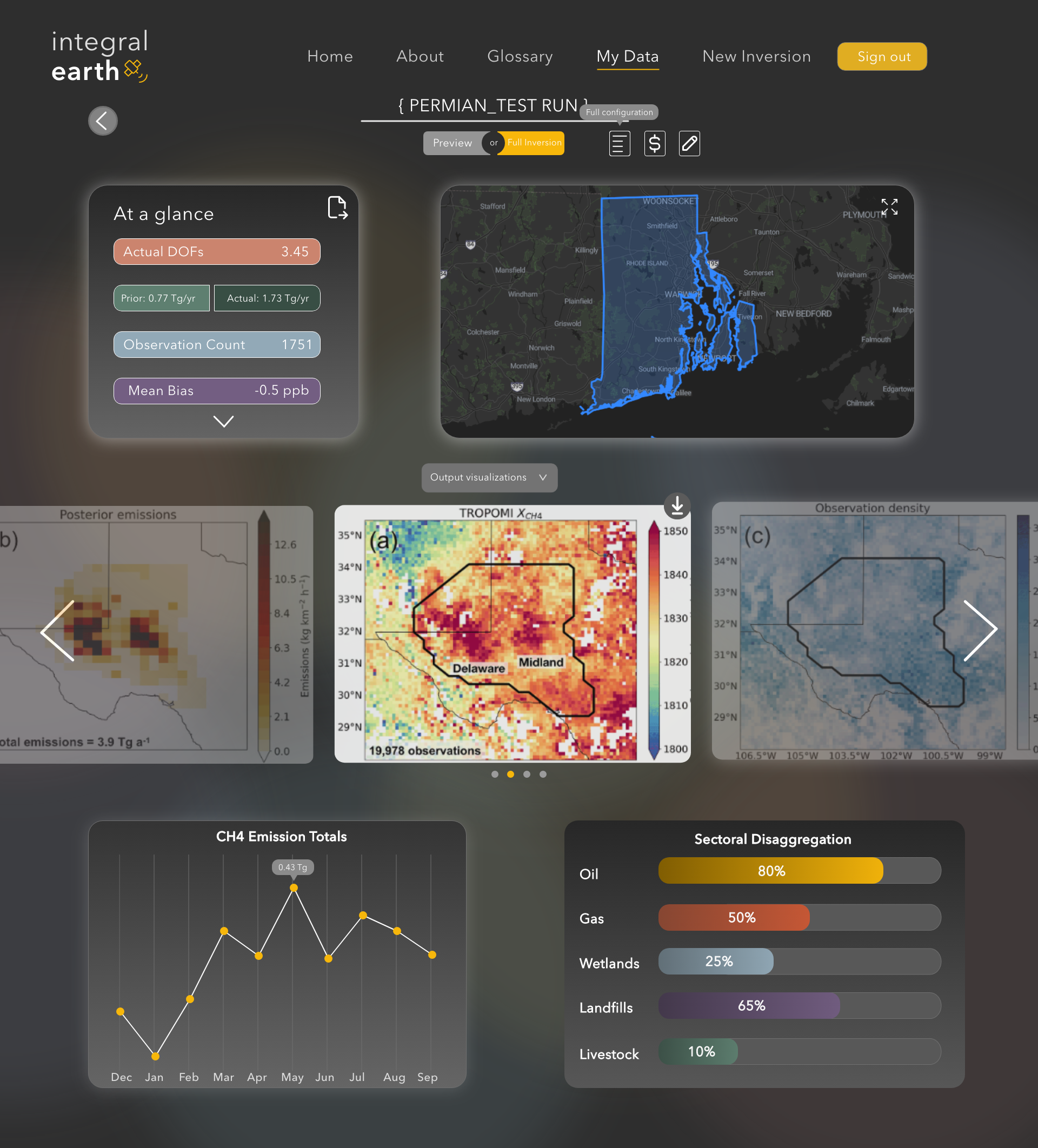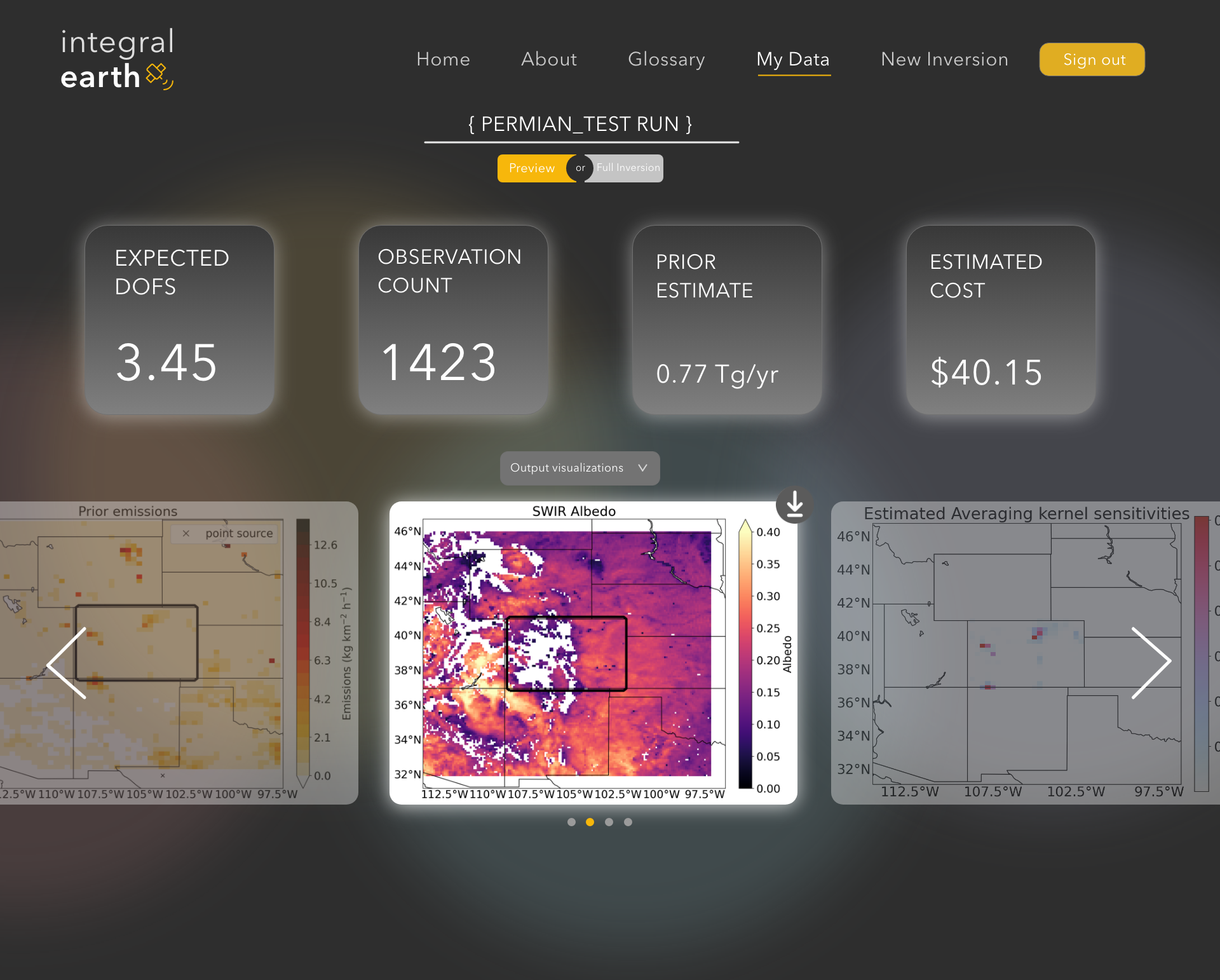New Developments
Integral Earth

The IMI provides invaluable methane emissions data that has been used by researchers, students, and stakeholders. And this data will only get more useful with the exciting release of IMI 2.0. Despite this data’s usefulness, the IMI often requires substantial technical expertise and access to computational resources.
Integral Earth will provide an intuitive, user-friendly interface that simplifies the entire process. Users will be able to easily select their regions of interest, define inversion parameters, and visualize results without needing to understand complex coding or data processing techniques.
This democratization of access will empower a wider range of stakeholders, including policymakers, researchers, and environmental organizations, to leverage high-resolution methane emission data for climate action.
Integral Earth is nearing the end of beta development and will be released in advance of the IMI workshop on November 4th.
- See concept screenshots below.


Looking Forward: Goals for IMI 3.0
- 12-km inversion capability
- Enable inversions at 12-km resolution in the IMI (led by Melissa Sulprizio and Xiaolin Wang)
- Integration of MethaneSAT data into the IMI
- Option to use MethaneAIR and MethaneSAT data to quantify emissions with the IMI (led by Jack Bruno)
- Incorporation of point sources
- E.g., by incorporating point source observations into IMI prior emission estimates (led by James East)
- Extend the IMI to CO2 (IMI + CO2 = ICI)
- Develop CO2 inversion capabilities (led by Hannah Nesser)
- Options for OCO-2/3, GOSAT-GW, CO2M